INTRODUCTION
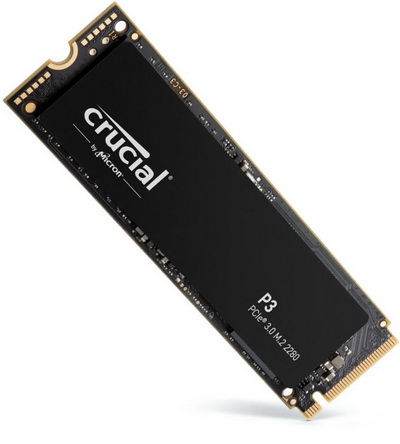
The appearance of PCIe 4.0 Gen4 SSDs roughly 4 years ago followed by the somewhat recent debut of PCIe 5.0 Gen5 models has made it easy for many to forget that the vast majority of consumers still use PCIe 3.0 Gen3 systems. Unfortunately, this also stands true for many storage media manufacturers and even though i do realize that some need to focus their resources to develop models based on newer standards support for older systems is always a must in my book. Luckily there are always some manufacturers which do their best to cover everyone in the market and since Crucial has made that clear over the years the release of their P3 line of PCIe 3.0 Gen3 M.2 NVMe SSDs last year was not unexpected.
We are an industry leader in innovative memory and storage solutions transforming how the world uses information to enrich life for all. With a relentless focus on our customers, technology leadership, and manufacturing and operational excellence, Micron delivers a rich portfolio of high-performance DRAM, NAND and NOR memory and storage products through our Micron® and Crucial® brands. Every day, the innovations that our people create fuel the data economy, enabling advances in artificial intelligence and 5G applications that unleash opportunities — from the data center to the intelligent edge and across the client and mobile user experience. To learn more about Micron Technology, Inc. (Nasdaq: MU), visit micron.com.
Just like the P3 Plus line the P3 is currently available in 500GB/1TB/2TB/4TB capacities and is also based on PHISON's 4-channel (ARM Cortex-R5 single processor) PS5021-E21 NVMe v1.4 DRAM-less NAND flash controller along with Micron's 176-layer 3D QLC NAND flash (N48R). Yes, the Crucial P3 PCIe 3.0 Gen3 line uses an PCIe 4.0 compatible NAND flash controller and what’s really important about that is not so much performance (since many Gen3 SSDs have long hit a ceiling on that) but the up-to-date set of features it packs (as opposed to older Gen3 oriented controllers). Once again the PS5021-E21 NAND flash controller by PHISON features their 4th Gen LDPC engine (low-density parity check) along with end-to-end data path protection, Host Memory Buffer (HMB) architecture support (a fraction of your PC's system memory is used to cache mapping tables - only supported on versions of Windows 10/11 launched from 2019 and beyond), wear levelling, low power mode, thermal monitoring (70 degrees Celsius limit), TRIM, bad block management, static/dynamic range SLC cache and SmartECC 2.0 (RAID ECC) and fully supports AES-256bit hardware encryption (with SHA512 and RSA4096) along with TCG Opal 2.0 and Pyrite. In terms of endurance Crucial reports an TBW of 110/220/440/800 for the 500GB/1TB/2TB/4TB models and as expected covers the entire line with a 5-year limited warranty.
SPECIFICATIONS AND FEATURES

PACKAGING AND CONTENTS
The slightly redesigned box has the Crucial logo at the front right next to a large product picture, capacity and its advertised performance numbers.
At the rear Crucial lists everything you're getting with the P3 SSD.
Along with the drive and the quick start guide inside the box you'll also find an M.2 screw.
THE P3 4TB
Once again, we see an M.2 SSD that follows the 2280 standard so nothing new here.


 Under the top sticker (regular sticker) we find the PHISON PS5021-E21 DRAM-less NAND controller and 4 Micron 176-layer 3D QLC NAND flash modules (N48R).
Under the top sticker (regular sticker) we find the PHISON PS5021-E21 DRAM-less NAND controller and 4 Micron 176-layer 3D QLC NAND flash modules (N48R).
The opposite side is empty and just has two stickers filled with certifications and the drives technical details.
TEST BED
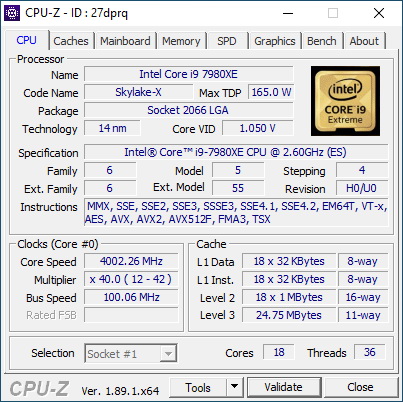

TESTING METHODOLOGY
Not long after I first started testing SSDs back in 2008, I concluded that it's almost impossible for any single benchmark suite to accurately measure their performance and that's why in certain benchmark suites we see amazing read/write performance numbers with some drives while in others things are quite different. The reason behind this is that some benchmarking suites are configured to read and write random chunks of data while others read and write constant (sequential) ones. So that's why i always use a very wide selection of benchmarking suites including AIDA64, HD Tach RW, HD Tune Pro, Crystal Disk Mark, Sisoftware Sandra Pro, AS SSD, IOmeter and ATTO. To get the most accurate results each test gets repeated a total of 6 times with the average performance numbers recorded into the charts*/****. Also, as of February 25th 2015 our results will also include the Storage Networking Industry Association’s (SNIA) IOMeter tests. These tests include a 12 Hour write test used to “simulate” performance degradation over time and a mixed workload test which basically shows what you can expect when using an SSD continuously for roughly two hours. Unfortunately, due to the time required for these tests they get repeated a total of 3 times and not 6 as the above.
Many people have made inquiries about our charts in the past so once again please do keep in mind that the Charts have the average performance numbers of each drive recorded and not the peak (highest) ones. Also, although every single one of these programs can help potential buyers choose the right drive for their needs you should also remember that from any kind of benchmark up to real world usage the gap is not small (and usually most differences will go unnoticed by most people). All tests were performed in a fresh Windows 10 Pro x64 installation complete with every update up to the date of this review.
* Since November 2018 the SSD comparison charts have been divided to 2.5” and M.2 models to reduce their growing size.
** Unless stated otherwise the Ryzen 9 3950x based Test Rig used for M.2 Gen 4 SSD reviews is not located in the lab.
*** As of January 2021 for Gen 3x4 models I’ll be using the Core i9-7980XE test rig (after numerous tests the up to 6% difference in read & write performance compared to the i7-6700 system simply wasn’t enough to justify having an extra test rig around).
**** Since February 2022 M.2 NVMe Gen3 and Gen4 SSD drives are placed in different charts.
TEST RESULTS - AIDA64 / ATTO


TEST RESULTS - HD TACH RW / HD TUNE PRO
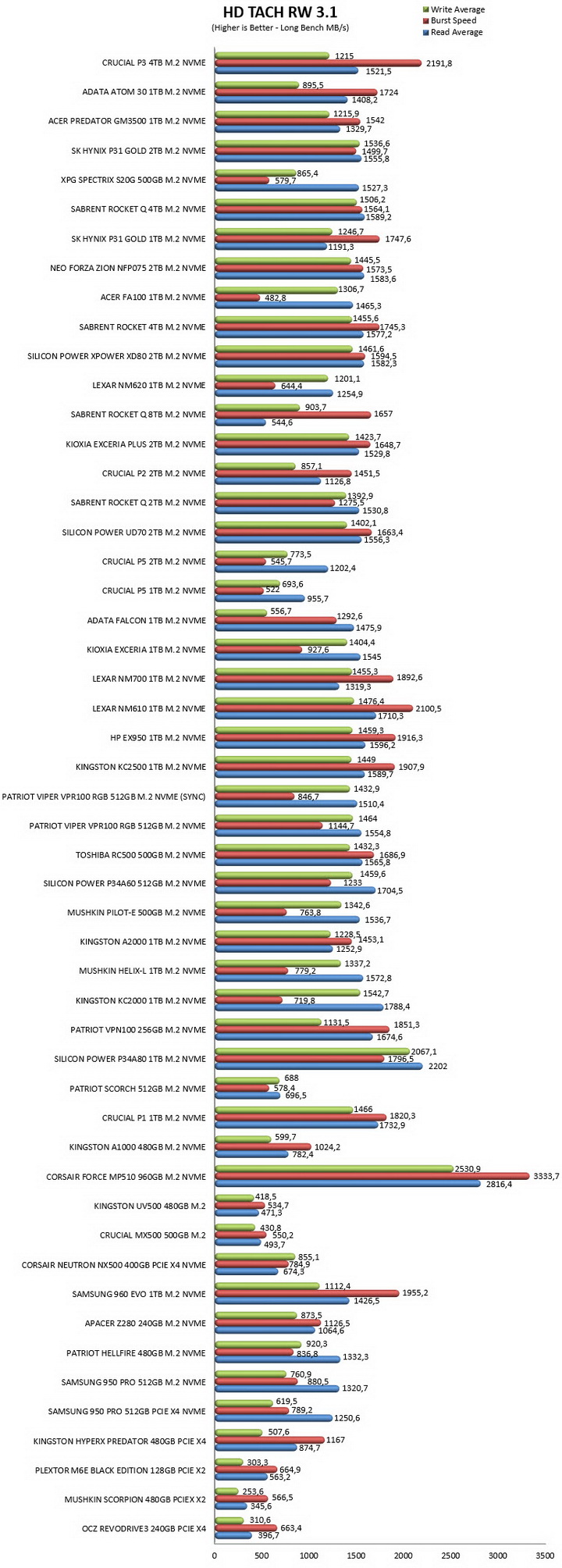

TEST RESULTS - SISOFTWARE SANDRA PRO / CRYSTAL DISK MARK


TEST RESULTS - AS SSD / IOMETER


TEST RESULTS - IOMETER SNIA

CONCLUSION
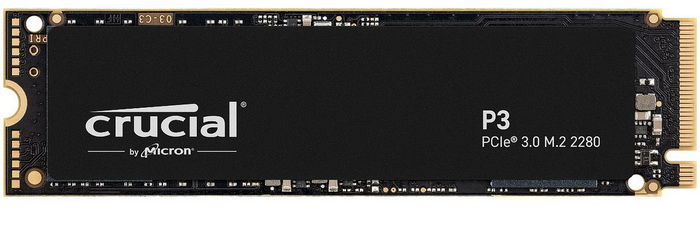
What makes the P3 PCIe 3.0 Gen3 line of M.2 NVMe SSDs by Crucial stand out from most similar models is of course the use of PHISON’s PS5021-E21 NAND flash controller which I’ve seen used only on PCIe 4.0 Gen4 drives. Yes, by using this NAND flash controller Crucial is not actually hoping to reach new heights in terms of Gen3 performance but rather offer the latest set of features to previous generation systems. That being said performance is also good, not the best I’ve ever seen from an PCIe 3.0 Gen3 drive (as evident from the charts – this is still a DRAMless drive after all) but it does come close. Relatively low durability/endurance numbers is the sole “issue” I’ve always had with QLC NAND based drives as opposed to TLC based ones. True, this is probably not something that will ever affect casual users but it’s still an area where TLC drives do better and so for heavy workloads, they are clearly the way to go.
I always say that price is what usually makes or breaks a product and with a current price tag set at USD199.99 inside the USA (Crucial.com) and 281.33Euros inside the EU (Amazon.de) the P3 4TB is priced extremely well, especially in the US of A. Bottom line if you own a PCIe 3.0 Gen3 system or if you own a more modern system and you’re after a secondary SSD the Crucial P3 4TB M.2 NVMe model is a very good choice and for that it gets the Golden Award.

PROS
- Overall Performance (For a DRAM-Less Drive)
- PHISON PS5021 NAND Controller (Up To Date Features)
- Up To 4TB Capacity
- Storage Executive Software
- Cloning Software Included
- 5 Year Limited Warranty
- Price (USA)
CONS
- Thermal Throttling (During SNIA Tests)
- Durability / Endurance (Compared To TLC NAND Drives)

 O-Sense
O-Sense





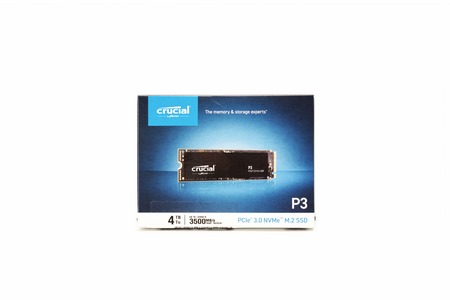
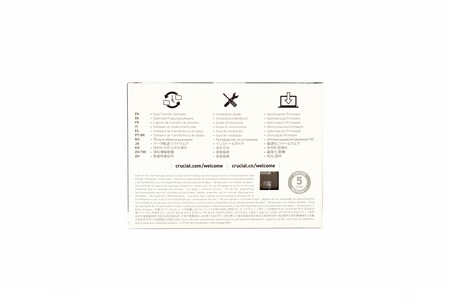

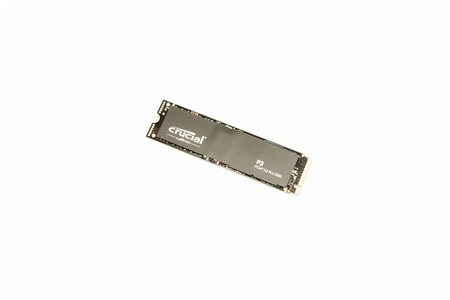





.png)

